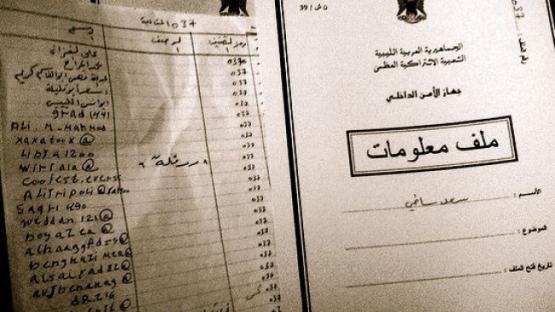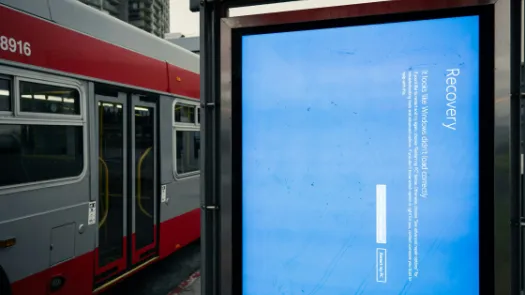South African government provided funding for development of mass surveillance technologies found in Libya

On at least two separate occasions, the South African government has provided funding to a well-resourced surveillance company for the development of mass surveillance technologies, the very equipment found to be used by the Gaddafi's repressive military regime in Libya, according to documents uncovered by Privacy International.
In February 2008, sandwiched between funding for a mechanical grape conveyor belt, and funding to improve gear changing and engine efficiency, the South African Ministry of Trade provided R 870,822.45 of public finds to the surveillance company VASTech – specifically for the Zebra system. Two years later, in January 2010, the Ministry approved even more public money to VASTech, this time the amount to the tune of R 2,692,684.00.
The South African government cannot even claim ignorance for funding the development of mass surveillance technologies that were used to violate the rights of the Libyan people and beyond, since the Support Programme for Industrial Innovation (SPII) Annual Report gives a short description of what Zebra is designed to do. The SPII Rules state specifically that funding is given for innovative product upgrades, and that the functionality of the package must be increased substantially. The Ministry of Trade had to have had full knowledge that Zebra had mass surveillance capabilities, as VASTech would have had to proven it's increased capabilities in accordance with the program's funding requirements. Also, the rules of the SPII programme which apply to VASTech, have no mention of safeguards or a system in place to ensure the development does not result in potential violation of human rights or misuse of that technology.
Demanding answers
Given the complicity of the South African government in the developing rights-violating technologies, we wrote to the Ministry of Trade to get some answers. Here's what we asked:
- Did they undertake any human rights due diligence procedures before or during the awarding of the public money to VASTech;
- Were any other Departments, Ministers, or officials within the South African Government consulted before the awarding of grant;
- Was the Ministry aware of Zebra being advertised as capable of mass surveillance before VASTech was awarded a second round of funding in 2010;
- Has there been any further financial or personal links or activity between VASTech and the South African Government in the last 12 months; and
- Did VASTech provide full and complete information on Zebra's capabilities for mass surveillance in their SPII grant application?
Most governments use their Ministry of Trade or Enterprise as a conduit to push public money into the development of new technologies, new drugs, new scientific research, and new engineering techniques. And there are tangible and real benefits to society from this funding. According to the SPII programme, the funding is designed to specifically focus on the development phase that begins when basic research has finished, and ends when a pre-production prototype has been produced. This would also include upgrades of an existing product if increased capability can be shown.
But here's the thing: Zebra had been in development since around 2002. By 2005, it was obvious VASTech was no longer a start up, as the company already had multinational contracts and a turnover in the tens of millions, not to mention a three-year contract with the South African Government itself. By the end of 2006 VASTech was set to produce a demonstration model of a newer version of Zebra, which would kickstart a marketing effort to a wider audience. Remember, this was an effort to market mass surveillance technology to a wider audience.
VASTech in Libya
VASTech S.A was founded in 1999 in Stellenbosch, South Africa by Frans Dreyer, the brother of current South African MP Anchen Dreyer. He founded the company after he left his position as Head of Spescom DataVoice, a business that specialises in the recording, managing, and analysis of ‘voice transactions’. It is probably wise to note here that DataVoice’s biggest customer in Africa in the early to mid 2000’s was Robert Mugabe’s Zimbabwe.
VASTech initially was a small company but by 2002 it achieved its first major contract worth R 2.4 million and became an equipment supplier to Siemens. Incidentally, Siemens and Dreyer's previous employer Spescom Datavoice have another longstanding relationship with each other. By 2005, VASTech’s annual turnover rose to R 30 million. In 2010, the company suffered a blow as Dreyer was killed alongside 102 other passengers and crew when Afriqiyah Airways flight 771 crashed at Tripoli airport in Libya.
Remaining with Libya however, VASTech established a reputation strong enough to allow it to become a provider of surveillance technology to Colonel Gadhafi’s regime. One of their flagship surveillance products, Zebra, was discovered in use in 2011, and provided Colonel Gadhafi with the ability to tap and log all the calls going in and out of Libya. Zebra allowed the security services to capture “30 to 40 million minutes of mobile and landline conversations a month and archived them for years”. Zebra also meant it could help those security services identify relationships between individuals based on analysis of their calling patterns.
It is advertised as a monitoring system “which connects to telecoms networks and intercepts voice, fax, and SMS communications” and has the “power and capacity to record everything, content included. VASTech boasts that each Zebra Capture Unit can intercept over 100,000 toll quality voice channels, including content, simultaneously, and that a Zebra Datacentre unifies up to 200 Captures Units into 1 system – that’s 20 million voice channels simultaneously. Clearly Zebra was a useful tool when fighting a brutal and bloody rebellion against your rule.
VASTech weren’t the only actors on the Libyan stage. Let’s not forget that this was a time of utter hypocrisy from Western countries, who for decades vilified Gadhafi as being a funder of international terrorism and a developer of weapons of mass destruction. But from 2003 on, all was forgiven as Gaddafi abandoned his WMD programme and helped in 'counter terror operations' in the Global War on Terror. This was now a time when trade deals took precedence over their own criticisms. VASTech was far from the only Western company to provide Libyan security and secret services with surveillance technology, but what makes this interesting is the financial connections between the two.
That their technology was used by Colonel Gadhafi to combat terrorism and weapons smuggling (which is what VASTech say it is used for ) would ring less hollow if Gadhafi himself wasn't for decades an international pariah, for those exact same reasons. In it’s defence, VASTech's Sales and Marketing Director Andre Scholtz does state that they only sell “to governments that are internationally recognized by the UN” and are “not subject to international sanctions.” A high bar indeed.
Why provide funding?
Given the history of surveillance and infiltration carried out on South African society during the apartheid regime by the old State Security and National Intelligence services, it would certainly be a painful development that the post-apartheid South African government decided on wholesale funding of the development of mass surveillance technologies.
So what possessed the South African Government to fund VASTech twice? It was a successful and wealthy company with no need for such funding but the Government felt it was the right thing to approve. The South African Government seemingly felt that funding the development of mass surveillance technology was a good use of public money, and a beneficial use of the research and development sector. The gain from VASTech's perspective was clear - free money. What was the gain for the South African Government? We hope to get some answers.



